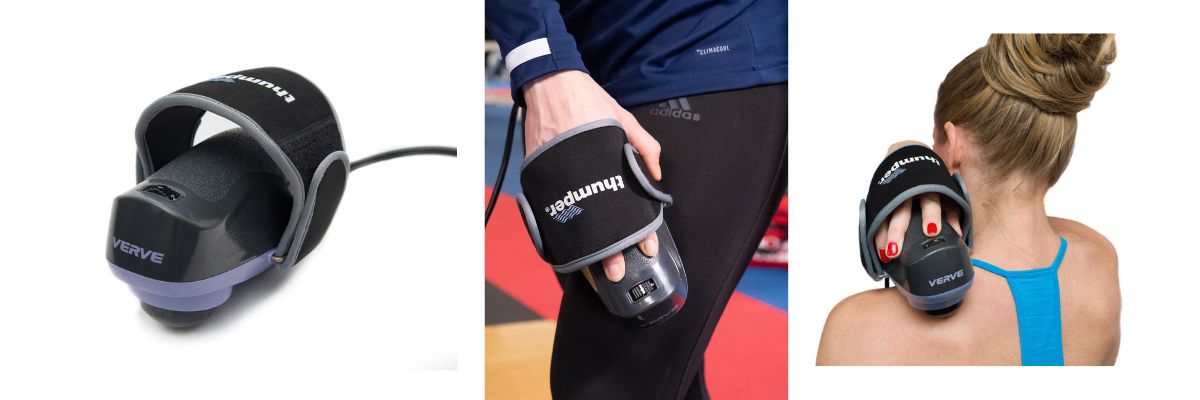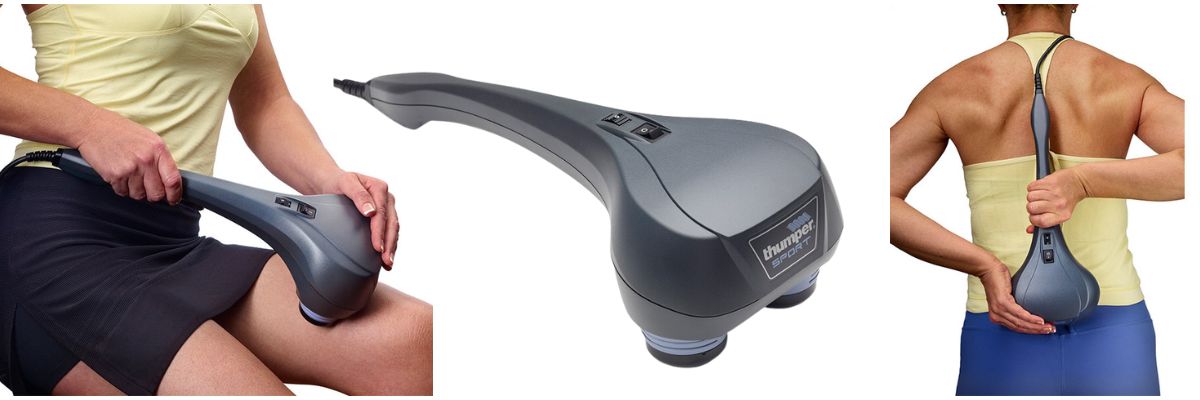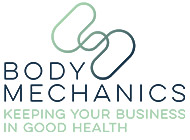Menstrual Health and Menopause in the Workplace – new BSI Standard
Women frequently feel they can’t talk about their menstrual health so in this article, we take a look at how the British standard can help improve things for the better.
Women frequently feel they can’t talk about their menstrual health so in this article, we take a look at how the British standard can help improve things for the better.
Thumper Massagers are ‘at home’ massage tools, which have been created with convenience and accessibility in mind. They are handheld devices which use percussive action to work into muscles and are designed to help loosen any muscle tension and tightness being experienced. You can use Thumper Massagers to provide massage treatment on yourself or on another person. They’re great as a quick fix or a top up treatment, in between your usual physical therapy schedule.
We have selected two Thumpers from our healthcare product provider, Physique which we think will be best suited to our clients, based on your questions and your treatment requirements. Should you wish to buy either of these Thumpers, the links are below and a 10% discount is available to Body Mechanics’ clients.
We hope this review will help you make an informed decision about how and which Thumper Massagers may be of benefit to you.

Working into targeted or smaller areas
⭐️⭐️⭐️⭐️ (4 stars)
We’d buy this! We found it a quick and effective fix to help ease any tightness in specific areas e.g. lower neck/shoulder line, lower back close to the spine, glute/hip, fronts of shins, feet and ankles, forearms.

Easing tightness and tension in bigger muscle groups
Great for working into larger areas like the hamstrings, quads, glutes, either side of the spine and the calf muscles
⭐️⭐️⭐️ (3 stars)
We have mixed feelings about this Thumper. It's easy to use on the back half of your body, due to the long handle, but we wanted more pressure and couldn’t quite achieve it. On the front half of the body, it was a different story. We think the same or better results could potentially be achieved through foam rolling, although the Thumper is a more pleasant experience.
There are other Thumper Massagers available, so please check them out for yourself
Headaches are a common ailment, which will have been experienced by most people at some point. In fact they’re so common that we often don’t give them the proper attention they deserve - we may ‘pop a pill’ or ‘sleep it off’. However, there are different types of headaches and therefore different reasons as to why they occur. It’s worth looking at the factors which may trigger a headache in order to treat it correctly. We give you a summary overview here in this article.
Very simply, a headache is a pain experienced in the head, which can manifest as a dull ache, a sharp pain or pulsating/throbbing. Symptoms tend to be:
● Pain or discomfort in the head and/or face
● Tenderness of the scalp
● Pressure in the head and/or behind the eyes
● Hypersensitivity to sound, light and temperature
● Dehydration
● Erratic eating patterns
● Food allergies or intolerances
● Stress
● Eye and/or eyesight issues
● Muscle tension and/or tightness
● Injury to the back, neck, shoulders or head
● Poor/incorrect posture
● Lack of sleep
● Illness such as flu
● Menstruation
● Hormone imbalances
● Overconsumption of alcohol or caffeine
These lists are illustrative and not exhaustive.
Tension - the most common type of headache, which feels like a tightening or a pressure around the head
Hormone - changes in hormone levels can trigger headaches and can be brought on by menstruation, contraception, pregnancy, menopause or HRT
Cluster - an intense head pain, usually experienced on one side of the head and/or face and eye. Not overly common. Tend to be experienced from middle age onwards. Come on suddenly and can last for several weeks. Can cause changes to the eye, such as redness, watering or swelling, as well as extreme agitation in a person. Cluster headaches have been linked to smoking and genetic predisposition. Seek medical advice as further investigation and stronger prescription medications will be required.
Migraine - moderate to intense head pain, often experienced alongside nausea and/or sickness, brain fog, increased sensitivity to light, sound and/or temperature. Can occur from teens onwards. Can last for hours to days. There are three different types of migraine, which include the previously mentioned symptoms and:
Seek medical advice as further investigation and stronger prescription medications will be required.
Drink Water - try to drink at least 2 litres per day. Ensure you drink enough water to replace any lost through exercise and perspiration, or diuretic drinks, like tea and coffee
Medication - over-the-counter (OTC) painkillers such as paracetamol, ibuprofen and aspirin. Cluster headaches and migraines will require medical guidance for medication.
Ergonomics - ensure you keep your body in neutral alignment wherever possible. Consider how your seating, standing and lying positions affect your posture - do you have the correct support for your body, particularly when sitting and sleeping? Do you work from home - does your workplace set need to be assessed?
Rest and De-stress - take some time to rest and recuperate, allowing the pain to subside
Light Exercise - stretches/yoga, walking or a massage to help alleviate any muscle tension or tightness
Avoid - any food or drink that triggers allergies or intolerances
Test - get regular eye tests
Alternative Therapies - both acupuncture and reflexology have been known to help alleviate pain and headache symptoms
Always seek medical advice prior to treatment and/or consult a pharmacist.
All of the below equipment is available from our Partner Providers, Physique at 10% discount.
Use a combination of the below to help relieve your symptoms as appropriate:

Health and Wellbeing is becoming an increasingly significant issue within the workplace. Employers are placing greater emphasis and investment on supporting employees with various challenges, whether they’re mental, physical, financial or social. This is fantastic news! A frequently asked question however, is who should oversee health and wellbeing in the workplace? Whose responsibility is it?
Some believe the answer is determined by the overall purpose of your health and wellbeing programme. Was it set up to help with high levels of sickness absence? To attract and retain the best talent? Was it set up to address mental health support? Or to educate employees about better nutrition?
While there is merit in this perspective and whatever the core reason for your health and wellbeing programme, we believe consideration needs to be given to the bigger picture.
Traditionally, ‘people issues’ fell to HR. Today, organisations’ are taking a more comprehensive and blended approach to supporting their employees. Health and wellbeing means different things to different people and has many facets, requiring input from different parts of an organisation. For example, HR undoubtedly still has a role to play, but so too do Occupational Health, Facilities Management, Recruitment, Employee Benefits, the C-Suite and so on.
Health and wellbeing is better managed as a cross-organisational initiative with the relevant people and departments feeding into the development, implementation and coordination of the services being offered as a whole. This is arguably one of the main reasons we’ve seen the creation of teams and departments with broader titles like Employee Experience, People Engagement and The Future of Work - they’re focusing on an overarching organisational concept, rather than one specific business function. Health and wellbeing is a cultural workplace movement.
Such a collaborative, blended approach to health and wellbeing means that the coordination of resources and the use of metrics become key in monitoring the services provided, their uptake, the level of investment and the return on that investment. Without metrics, any health and wellbeing programme will fall flat.
Ryan Hopkins, Future of Wellbeing Lead at Deloitte stated that ‘what gets measured gets incentivised and that gets investment. Wellbeing is a science and not an art. Attach a financial value to these measurements to make the C-suite understand and engage. Health and wellbeing has to grow outside HR. It must be a cross-functional approach, an employee experience, addressing issues like wellbeing, inclusion, purpose and satisfaction for it to be effective’
Metrics can be used over time to measure specified key performance indicators, to spot trends and correlations and to further enhance health and wellbeing in the workplace.
Health and wellbeing is slowly, yet increasingly being seen as an initiative that falls to many, rather than just one department. Potentially, this means that health and wellbeing programmes will be more comprehensive and robust, with more employees using the services on offer. Draw and coordinate the resources available to you across your organisation, use metrics to benchmark, monitor and ultimately, secure investment - your employees and your organisation will thank you.
This is a question we get asked frequently at Body Mechanics, so we thought it’d be useful to give you a summary overview.
Physiotherapists, Chiropractors and Osteopaths are all physical therapists who look to promote optimal physical health - integrity, function and movement - of the body’s soft tissues, joints and systems.
They can be used to:
A wide range of health conditions can be treated through these therapies such as back pain, sports injuries, stroke, MS, heart attack, cystic fibrosis and many more. Although their aim is ultimately the same, their approaches and priorities differ.
- takes a holistic approach to treating the body, as well as focusing on a particular issue area when appropriate. They will offer tailored education, advice, and rehab exercise schedules, as well as using manual therapy, where the Physio will use their hands to encourage better function and movement of the body.
Broadly speaking Physio’s will put soft tissue first - muscles, ligaments, fascia, and tendons - and joints second. When it comes to treating a system within the body, a more holistic approach will be adopted.
Other techniques such as dry needling, acupuncture, ultrasound, and transcutaneous electrical nerve stimulation (TENS) can be used to work into the joints and soft tissues.
Registered Physiotherapists can be found at The Chartered Society of Physiotherapy
- is considered by some, to be a blending of both physiotherapy and chiropractic, in that Osteopaths adopt a holistic, combined approach, looking at both soft tissues and joints throughout the body and not in isolation.
Osteo’s will work into both the soft tissues by way of stretching and massaging, to loosen muscles, ligaments, fascia, and tendons. Joints will be articulated and taken through their full range of motion to then enable any joint manipulations or adjustments, similar to Chiropractic, using quick controlled movements and/or pressure to realign the bones/joints.
Osteo’s will frequently offer guidance on rehab exercises and self-care treatments at home. They may often use other techniques such as dry needling, transcutaneous electrical nerve stimulation (TENS) low level massage.
Osteopathy can sometimes feel unusual and intense, but it should never feel painful.
Registered Osteopaths can be found at The General Osteopathic Council
- places its focus on the spine. Chiropractors work on the premise that the spine is the body's main structural support, neural highway, and movement enabler, so correct alignment of the vertebrae will subsequently keep the rest of the body healthy as a result.
Generally, Chiro’s will put joints before soft tissues, however, they may work into the soft tissues by way of stretching, to help ease any tension and tightness. These stretches allow Chiro’s to ‘free up’ a particular vertebrae or joint. They use spinal manipulation or adjustments to help realign the spine, which may involve quick, controlled movements and/or pressure. This can at times feel odd, but at no point should it be painful.
Registered Chiropractors can be found at The General Chiropractic Council
We personally prefer Osteopathy as a manual therapy as we consider it to be the more comprehensive of the three. Where appropriate we advise our clients to maintain their physical health through regular exercise, osteopathy and sports massage, as this ensures general fitness, structural/skeletal alignment and healthy soft tissues. We use Osteopathy on a monthly to quarterly basis for maintenance and get massage at least once a month for wear and tear.
With the first quarter of 2023 almost done, HR professionals and industry in general, now have a better understanding of employee and business trends going forward. In this article, we give you a summary round-up of these understandings and observations so far.
Unum have collated the following stats about the cost of living crisis and how it will impact individuals and businesses alike:
So how can employers help ease the challenges faced by their employees and what are the best approaches?
Having issues around attracting and retaining talent and filling potential skills gaps, is forcing businesses to look at ways to make their organisations, job roles and employment packages more attractive and realistic for the world today - financial security, tangible benefits, flexibility and convenience, meaningful work and career progression, all being key. A comprehensive employment package will also reduce recruitment costs long term and will increase employee loyalty.
David Pye, Director At Leading Independent Consultancy Broadstone says ‘Businesses need to take a more proactive approach to both recruitment and retention, ensuring that their workers have access to what matters to them and that their employee value proposition is targeted and relevant. Good pay in the current inflationary environment is obviously important, but so are many ancillary benefit offerings such as employee wellbeing propositions and it appears key sectors have failed in many of these areas that could lead them to fail over the medium term’
Octopus found that employees are crying out for more benefits which offer tangible financial support. In fact, 73% of employees want cash saving benefits, particularly now during the cost of living crisis. Support around childcare, food, travel, health and wellbeing and work life integration are where employers should focus their benefit package offerings.
In the everyday work environment, initiatives such as clear career progression and development, spot bonuses, length of service rewards and acknowledgement for work well done all help to make employees feel valued and loyal to your business.
By bringing the above highlighted elements into your employee benefits package and your business management strategy, you’ll be able to fulfil the needs of both your people and your business. You’ll be able to support and reward your employees, to increase employee retention and engagement, to improve the levels of stability, productivity and of course, overall profitability to your business. People are a key asset to your business, invest in them wisely.
Danni Rush: Hr Trends For The Year Ahead
Posted by Amelia Brand on Mar 1, 2023 for HR Review
https://www.hrreview.co.uk/analysis/danni-rush-hr-trends-for-the-year-ahead/151326
Cost-of-living crisis expected to spark the Great Resignation of 2023
Unum 12th December 2022
https://www.unum.com/about/newsroom/2022/December/Cost-of-living-crisis-expected-to-spark-the-Great-Resignation-of-2023
3 In 10 Businesses Facing Recruitment Difficulties
Posted by Amelia Brand on Mar 1, 2023 for HR Review
https://www.hrreview.co.uk/hr-news/recruitment/3-in-10-businesses-facing-recruitment-difficulties/151288
The Sustainable Workforce Report
Octopus
How to Create a Strategic Employee Wellbeing Plan that embeds Mental Health Care
Webinar 28 Mar 2023
Hosted by Dr Angel Enrique and coordinated by Claire Farrow
Sprains and strains are injuries which occur to our body’s soft tissues, such as our muscles, tendons, and the ligaments - our connective tissues. However, there is a difference between the two.
Sprains refer to an overstretching or tearing of ligaments which subsequently stress a joint - tissues that connect two bones together. Common examples are a sprained ankle or wrist
Strains refer to an overstretching or tearing of muscles or tendons - tissues that connect a muscle to a bone. Common examples are the back or hamstring muscles
Strains
Acute (immediate) injuries - tend to be caused by an overloading of the muscle or tendon during activity such as lifting, where the load is too heavy and/or lifted using incorrect technique
Chronic (occur over time) injuries - tend to result from repetitive movements where the muscle or tendon is put under strain frequently.
Sprains
Sprains tend to occur in highly mobile areas of the body, such as the knee, ankle, wrist or thumb and happen due to ‘landing’ awkwardly on uneven surfaces when pivoting, jumping, overextending or bracing yourself
Consult a Physical Therapist to receive bespoke rehab exercises.
Begin to re-use the injured area after 48 hours if possible. If you can’t and/or unable to , seek medical help
Cold Therapy - a cold gel or cold pack can be used on the localised area to reduce any present inflammation
Heat Therapy - a heat lotion, gel or pack can be used on tight muscles around the injured area, not on, the injured area itself
Painkillers - over the counter medicines like ibuprofen (anti-inflammatory) and paracetamol (compound analgesic/painkiller) can help reduce pain and increase comfort in the short term and as a temporary measure.
Physical Therapy - Physiotherapists and Sports Massage Therapists will all be able to help treat and sprains or strains, gradually increasing mobility and strength
All of the below equipment is available from our Partner Providers, Physique at 10% discount using the code: BODYMECHANICS

Osteopathy is a non-invasive manual therapy, which helps to maintain overall health and wellbeing by focusing on skeletal and soft tissue integrity. By maintaining good skeletal alignment throughout, Osteopathy optimises the function and repair of muscles, nerves, connective tissues and therefore systems within the body.
Osteopathy can help with a number of issues. It can help to:
Numerous conditions can be diagnosed and treated by viewing the body as a whole; identifying and isolating the cause from the symptoms.
Prior to treatment, your Osteopath will discuss your symptoms, medical history, lifestyle, as well as assessing your current flexibility and movement, and of course, your health and wellbeing objectives.
Treatment work will involve a combination of:
to correct and restore your body’s skeletal health, function and capability.
Aftercare advice is given to maximise treatment results. You will receive advice on stretches, exercises and low-level self-care, such as hot/cold packs, joint supports, foam rolling and more.
WANT TO BOOK A OSTEOPATHY APPOINTMENT
(Both Corporate and Private Enquiries)
Quiet quitting is a term which has recently come to the forefront of workplace discussions. It's considered by some to have become more prominent due to the change in work patterns attributed to Covid lockdowns.
Quiet quitting refers to individuals doing the bare minimum to fulfil their job role requirements. Very little else is carried out outside of their job description and their level of engagement drops. Quiet quitting highlights an issue around the employer/employee relationship, more specifically, a lack of trust around expectations of an acceptable workload and remuneration for that work and effort.
During a highly stressful time, Covid being a good example, quiet quitting is seen as a way to navigate change, to avoid any additional stress leading to burnout, as well as a way to maintain work/life balance. Quiet quitting gives individuals a way to take back control without having to have formal discussions with their Managers.
This change in individual behaviour is considered to have a wider impact on the workplace community and on team morale. By individuals taking a step back from their work and becoming disengaged, it can present a number of challenges for team peers, managers, and ultimately the organisation as a whole. In this article, we take a look at the signs of quiet quitting and how to potentially reduce it.
Quiet quitting tends to be an issue that builds up over time with behaviours changing gradually. Things to look out for are:
Quiet quitting can be avoided through better communication and a clear and agreed alignment between employer and employee expectations:
Quiet Quitting can be reversed through honest communication and a willingness to rebuild trust on both sides:
Quiet Quitting is a disconnect or a lack of alignment between an employer and an employee, with potentially negative consequences for both parties. It's essential to maintain open, reciprocal communication with employees, to let them voice their concerns and to mutually agree on any solutions going forward. Quiet quitting can be resolved by reestablishing clear boundaries and a balance around workload, workplace responsibilities, remuneration and reward. Treating employees as individuals and making a genuine effort to understand their feelings and frustrations can help rebuild a trusting relationship.
Why is Quiet Quitting A Rising Problem for Early Talent Cohort?
https://www.thehrdirector.com/quiet-quitting-rising-problem-early-talent-cohort/
By Charlotte Burton-Barker
Quiet quitting: The workplace trend taking over TikTok
https://www.bbc.co.uk/news/business-62638908
31st August 2022
By Perisha Kudhail
Quiet Quitting: How to Prevent & Combat it at Work
https://teambuilding.com/blog/quiet-quitting
30th October 2022
By Angela Robinson
10 Creative Ways to Show Recognition that are Outside the Box
https://www.rewardgateway.com/uk/blog/10-creative-ways-to-show-recognition
By Alexandra Powell
Conflict Management: a shift in direction
https://www.cipd.co.uk/knowledge/fundamentals/relations/disputes/conflict-management-report
CIPD
Massage helps to relieve and manage pain and discomfort, to increase range of movement, to improve posture and to promote overall health and wellbeing.
By keeping muscle tone and condition at its best, it allows nerves, connective tissues and joints to stay healthy, functional and with the ability to repair and heal.
A non-invasive, hands-on treatment working into the body’s soft tissues, more specifically the muscles and connective tissues.
Massage does a number of things. It helps to:
Massage can help relieve numerous conditions, both sudden, acute injuries and on-going, chronic conditions, can be treated, by identifying and isolating the cause from the symptoms.
Prior to treatment, your Massage Therapist will discuss your symptoms, medical history, lifestyle, as well as assessing your current flexibility and movement, and of course, your health and wellbeing objectives.
An appropriate type of massage will be used to treat your symptoms and possibly alongside some stretching:

Various massage strokes and techniques will be used, with light to firm pressure as appropriate, to work into the muscles, joints and soft tissues, helping to alleviate any discomfort.
Towels are provided to maintain your modesty at all times
Aftercare advice is given to maximise treatment results. You will receive advice on stretches, exercises and low-level self-care, such as hot/cold packs, joint supports, foam rolling and more.










